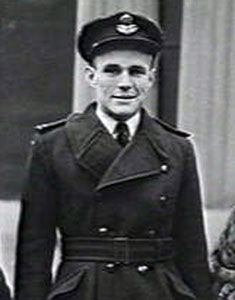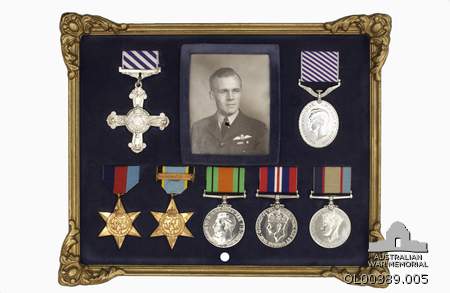At 20.00hrs on 15th November 1942 this 460 Squadron aircraft suffered it's tail wheel from collapsing on landing at Breighton airfield following a training flight. 460 Squadron were in the process of converting from Wellingtons to Lancasters at the time of this minor mishap. This landing was the pilot's first solo night landing in a Lancaster.
Pilot - F/Sgt James Alexander Saint-Smith RAAF (403380), of Earlwood, New South Wales, Australia.
Crew - Names unknown.
Lancaster W4310 was built to contract B.69274/40 by A.V.Roe Ltd. at Chadderton and was awaiting collection in October 1942. It was immediately taken on charge by 460 Squadron at Breighton on 13th October 1942. As a result of the mishap there on 15th November 1942 minor Cat.Ac/FA damage was the assessment. It was repaired on site and was returned to 460 Squadron on 24th December 1942. The aircraft was lost on 5th April 1943 when it failed to return from Ops to Kiel. The date on the Am.78 is wrong, that states it was lost on 30th March 1943.

James Saint-Smith was born on 29th December 1917 in Singleton, New South Wales. He enlisted on 6th January 1941 in Sydney and was working as a school teacher at the time. He gained his Wings on 1st September 1941 in Canada. On arrival in the UK he was posted to 23 OTU on 21st October 1941 and later to 12 Squadron on 16th March 1942 flying Wellingtons. This posting was only brief as he was soon posted to 460 Squadron on 11th May 1942, he flew Wellingtons with this unit until converting to the four-engined heavies at 460 Squadron Conversion Flight on 20th August 1942 before returning to his parent unit. He was later posted to 1656 HCU on 21st October 1942 and again returned to 460 Squadron on 10th November 1942. He and his crew were Lancaster W4783's first pilot/crew, this aircraft is preserved in Canberra, Australia. He flew it on thirteen operational flights with 460 Squadron. He was awarded the DFM for service with 460 Squadron for completing his Tour, his DFM was Gazetted on 14th May 1943, the citation reads.. "F/Sgt Saint-Smith has displayed outstanding determination in pressing home his attacks on enemy targets during numerous operational sorties. Early in March 1943 he participated in a raid on Berlin and obtained an excellent photograph after the bombs had been released. He has at all times taken great care to identify the target and has, as pilot, done all in his power to ensure accurate bombing. His high courage, skill and initiative have set a magnificent example to his crew."

Having completed his first Tour he was posted to instruct on 29th April 1943. He was later posted to 1655 MTU for Mosquito training on 23rd November 1943. He then took a posting to 627 Squadron PFF on 23rd December 1943. He had received commission on 17th February 1943 to the rank of P/O and was promoted to F/O on 18th August 1943. He was recommended for the DFC for service with 627 Squadron (later Gazetted on 15th August 1944), this was infact granted after his death and the reasons behind his loss are given below. The citation for his DFC reads.. "F/O Saint-Smith has taken part in a number of major attacks on Germany and enemy occupied territory. He has taken an important part in attacking an aircraft factory near Oslo and in several other operations against targets in Germany and France exerting himself to the utmost to ensure their complete and final success. All these operations have had to be accomplished from a low level and have owed much of their effectiveness to his conspicious gallantry and determination."
James Saint-Smith was sadly killed on Ops to bomb a V-1 launch site near Beauvoir, France on 29th June 1944, it was believed that the 627 Squadron aircraft, Mosquito DZ516, was probably caught in the blast of a V-1 that prematurely exploded near the Mosquito. The aircraft crashed near the village of Vaulx, near Tournai, Belgium and both he and his navigator were initially buried in the local village cemetery. This was F/O Saint-Smith's seventy third operational flight. Post-War the Wargraves investigation unit exhumed their bodies and they were later re-buried in a joint grave in Abbeville Communal Cemetery, France. Both men were twenty six years old. His navigator was F/O Geoffrey Heath who had also been his regular navigator at the time he was with 460 Squadron and could well have been in Lancaster W4310 when the tail wheel collapsed in the incident recorded at the top of this page.